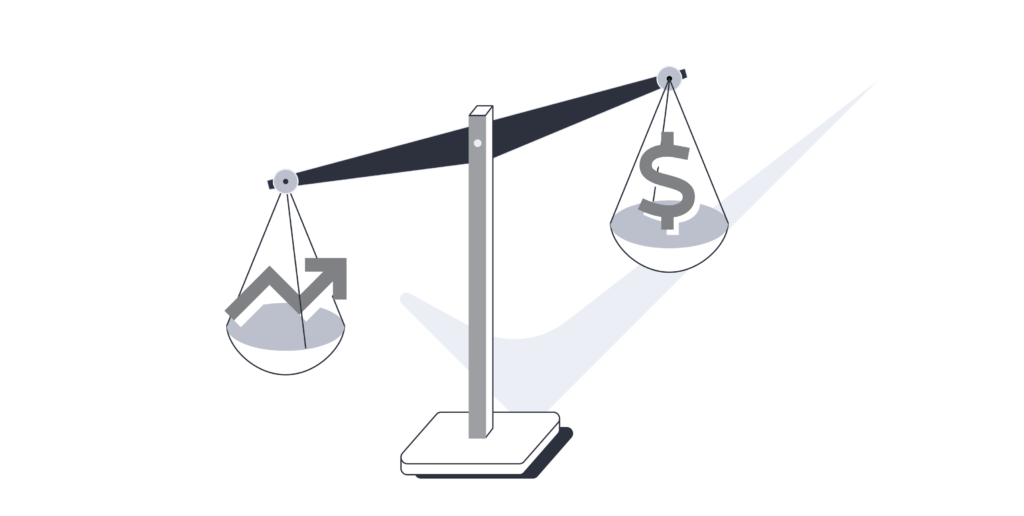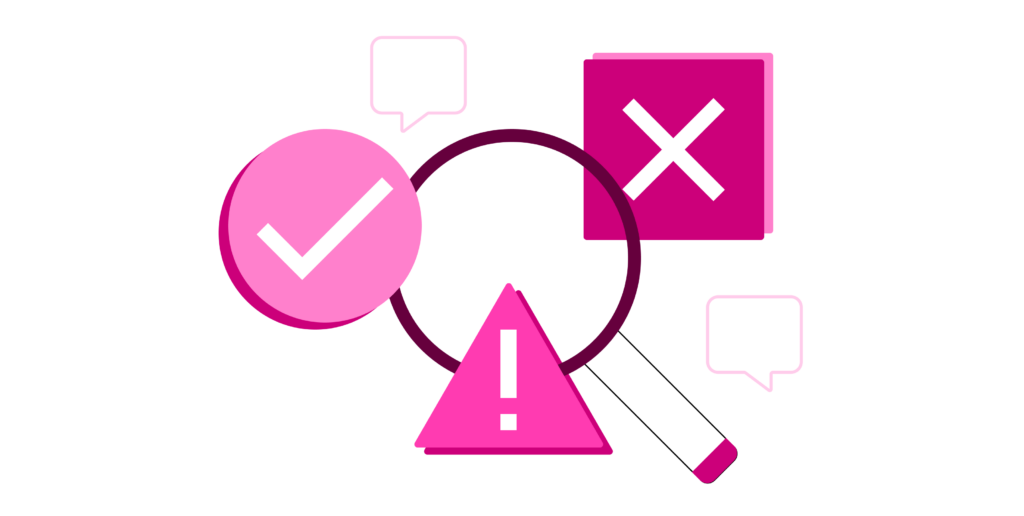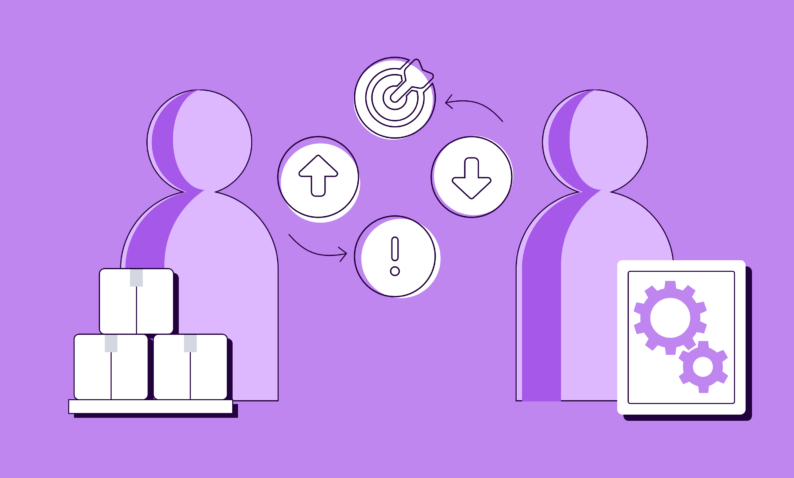How to use SWOT in Procurement
Every decision you make in procurement matters. That’s why you need more than just intuition. What if you had a compass to navigate the complexities of supplier relationships, market trends, and regulatory shifts?
Enter the SWOT analysis—a powerful tool that equips you with a clearer grasp of your internal strengths and weaknesses, as well as the external opportunities and threats that surround you. With this insight generator in your back pocket, you’ll make more informed decisions about your procurement strategies, supplier partnerships, risk management, and resource allocation.
This blog explores key areas where you can leverage a SWOT analysis in procurement to uncover valuable insights, pinpoint areas for improvement, and devise solid strategies:
- Supplier Evaluation: Choose allies with eyes wide open.
- Category Management: Orchestrate your resources with skill.
- Risk Assessment: Anticipate and weather storms.
- Cost-benefit Analysis: Balance the scales of investment and return.
- Contract Negotiations: Craft agreements that stand the test of time.
- Market Research: Scout the terrain for opportunities.
- Environmental Sustainability: Merge green-thinking into business.
- Technology Integration: Embrace the future together with your team.
What is a SWOT Analysis in Procurement?
This strategic framework helps you pinpoint what’s working well and what’s not in procurement while also identifying opportunities and threats through a meticulous market analysis. SWOT analysis in procurement is about making smarter moves in how you buy, who you partner with, and the risks you take on and manage—which is pivotal for healthy risk management in procurement.
This is particularly useful in procurement for its ability to guide strategic sourcing—ensuring you partner with the right suppliers at the right time. It also sharpens contract management, so every deal you make supports your overarching business goals.
Real-world Applications of SWOT in Procurement
Here are a few practical, real-world use cases for SWOT analysis in procurement:
Supplier Evaluation

Quickly pinpoint the strengths and weaknesses of your suppliers using SWOT analysis to drive strategic decisions. This insight not only builds supplier relations but also helps to ensure a cost-efficient and reliable supply chain.
- Quality: Examine the supplier’s product excellence and industry standing.
- Experience: Verify their track record for prompt deliveries.
- Innovation: Gauge the supplier’s capacity for innovation by looking at their product development capabilities and their ability to keep pace with evolving market trends.
- Cost: Is the supplier’s pricing competitive? Are there opportunities for greater cost savings?
- Lead times: Evaluate whether the supplier’s lead times align with your operational requirements and timelines.
- Financial stability: Scrutinize the supplier’s financial health to foresee and mitigate any risks of supply chain disruptions.
- Mutual growth: Identify potential areas where mutual growth is possible, such as joint product development or venturing into new markets together.
- Service expansion: Explore how the supplier’s extended services can benefit your operations and enhance your competitive edge.
- Negotiation leverage: Use insights gained from your evaluation to negotiate terms that foster long-lasting partnerships.
- External risks: Investigate external risks, from geopolitical tensions to market fluctuations that may impact your supplier’s performance.
- Resource reliance: Identify threats arising from the supplier’s reliance on scarce resources that could disrupt your supply chain.
- Contingency planning: Use your assessment to develop contingency plans that reinforce supply chain resilience.
Identify Strengths
Start by identifying your supplier’s strengths. A strong supplier can offer the competitive edge your operations need to thrive.
Analyze Weaknesses
Next, explore the flip side. Identify supplier shortcomings to safeguard your supply chain and ensure cost-effectiveness.
Explore Opportunities
Seek opportunities that can lead to long-term success in your supplier relationships.
Assess Threats
Last but not least, scan the horizon for potential threats that could jeopardize your supplier relationships and supply chain stability.
Category Management

You can also apply SWOT analysis to product or service categories within your procurement portfolio to gain a deeper understanding of your current position and develop strategies for better performance, cost reduction, and risk mitigation.
- Quality: Evaluate the quality of the products or services in each category. Which categories consistently meet or exceed your standards?
- Cost-efficiency: Analyze which categories offer the best value for your investment. Where can costs be trimmed without compromising quality?
- Supplier relationships: Assess the strength of your supplier relationships in each category. Strong ties often translate to favorable terms and streamlined procurement processes.
- Limited supplier options: Are certain categories overly reliant on one supplier? This can leave you vulnerable to supply chain disruptions.
- High costs: Identify categories with disproportionately high costs as this might signal the need to renegotiate or explore alternative suppliers.
- Quality issues: Highlight any categories plagued with recurring quality issues or customer complaints, as these can tarnish your organization’s reputation.
- Volume discounts: Identify categories where increasing your order volumes could lead to significant cost savings.
- Alternative suppliers: Explore opportunities to diversify your supply base within categories with limited options. This can potentially help you reduce risk and uncover more favorable terms.
- Innovation: Pinpoint categories ripe for innovation, whether in the products or services themselves or in the procurement process. Keep an eye out for emerging technologies and market trends.
- Market volatility: Which categories are most susceptible to market volatility and price fluctuations? Develop strategies to mitigate these risks.
- Regulatory changes: Be aware of any impending regulatory shifts that could impact specific product or service categories. Adapt your approach accordingly.
- Supply chain disruptions: Recognize categories vulnerable to supply chain disruptions, like geopolitical tensions, natural disasters, or other factors. Develop contingency plans to safeguard your procurement operations.
Identify Strengths
Start by uncovering the strengths within your product or service categories.
Analyze Weaknesses
Next, look at potential areas where your category management might falter.
Explore Opportunities
Now, seek out opportunities for growth within your categories.
Assess Threats
Lastly, be vigilant in recognizing potential threats that could disrupt your category management strategies.
Risk Assessment

By using SWOT analysis to assess risks in procurement, you can gain a better view of your potential vulnerabilities and strengths. Once you have this understanding, you can then develop targeted strategies to mitigate those risks and ensure a more resilient procurement operation.
- Robust relationships: Evaluate the strength of your existing supplier partnerships. Strong alliances act as a buffer during supply chain disruptions.
- Effective processes: How efficient and reliable are your internal procurement processes? You’re less likely to encounter issues with streamlined, well-managed operations.
- Supplier diversity: A varied supplier base reduces dependence on a single source, mitigating risks associated with supplier unreliability.
- Single-source dependency: Identify areas where your organization relies heavily on a single supplier, which makes it vulnerable to supply chain upheavals.
- Lack of visibility: Examine your processes for blind spots that could pose risks, such as lack of transparency in supplier operations that might be hiding potential disruptions.
- Inadequate risk management: Appraise your current risk management strategies and identify gaps that need to be addressed.
- Technology integration: Explore cutting-edge tech solutions that can seamlessly integrate into your procurement and risk management processes.
- Supplier diversification: Look for opportunities to expand the supplier base so you’re not dependent on just one source.
- Training and development: Invest in training your staff on risk management and strategic sourcing so they’re equipped to navigate challenges effectively.
- Market volatility: Stay attuned to volatile market conditions that could affect the stability of your supply chain.
- Geopolitical factors: Consider risks arising from political, economic, and social issues that could impact supplier stability.
- Regulatory changes: Keep abreast of evolving regulations that might introduce new compliance requirements or affect procurement operations.
Identify Strengths
Begin by examining the strengths within your procurement process—this is your first line of defense against potential threats.
Analyze Weaknesses
Pinpoint areas of vulnerability—those weaknesses that require your immediate attention.
Explore Opportunities
Next, find opportunities that can reinforce your risk management.
Assess Threats
Keep a vigilant eye on potential threats that could disrupt your procurement operation.
Cost-benefit Analysis

A SWOT analysis can help you evaluate the potential impact of your procurement initiatives, so you make more informed decisions that yield optimal results.
- Internal capabilities: Assess your in-house resources and capabilities that could contribute to the success of your initiative. Think about the skills of your team, your technological infrastructure, and established relationships with suppliers.
- Cost savings: Identify areas where the initiative could unlock cost savings. For example, does it take advantage of bulk purchasing, streamline processes, or negotiate more favorable terms?
- Efficiency gains: Consider how the initiative could improve efficiency, not just within procurement but across the entire organization.
- Resource constraints: Do you have the necessary manpower, expertise, or technology to successfully implement the initiative? Evaluate any internal limitations or resource constraints that could pose hurdles.
- Additional costs: Identify any extra costs. For example, will you need to invest in training, adopt new technology, or expand your workforce?
- Impact on operations: Assess how the initiative might disrupt your current operations or existing supplier relationships, possibly leading to hidden costs.
- Market conditions: Scan the external market for conditions and trends that could contribute to your initiative’s success. Are there opportunities for bulk purchasing, favorable terms, or new supplier partnerships?
- Innovation and growth: Consider how the initiative can open doors to innovation and growth, potentially leading to long-term cost benefits and revenue.
- Market risks: Evaluate external risks and market uncertainties that could impact the initiative. Are there geopolitical risks, market volatility, or supply chain disruptions that should be considered?
- Competition: Assess the competitive landscape. Could the actions of competitors undermine the cost benefits of your initiative?
- Regulatory changes: Consider any potential regulatory shifts that might introduce additional costs or barriers to the initiative.
Identify Strengths
Start by uncovering the strengths within your procurement initiatives—your secret weapons for cost-effectiveness.
Analyze Weaknesses
Now, look at potential weaknesses. These are pitfalls that could undermine your cost management efforts.
Explore Opportunities
Discover opportunities that can fuel your initiative.
Assess Threats
Watch for potential threats that could undermine your endeavors.
Contract Negotiations

Perform a SWOT analysis to understand and strengthen your bargaining position before you begin contract negotiations.
- Market position: Assess your standing in the market. A strong position often translates into better negotiating power due to brand recognition and customer loyalty.
- Unique expertise: Consider the specialized knowledge and capabilities you bring to the table. Leverage this expertise to command higher value or more favorable terms.
- Financial stability: Gauge your economic resources. A strong financial foundation provides flexibility, paving the way for longer-term, advantageous deals.
- Resource limitations: Acknowledge staffing or technology constraints that might hamper contract fulfillment. Negotiate terms that align with your capabilities.
- Market vulnerabilities: Identify aspects of your market position that could be vulnerable. Seek contract terms that provide greater security in these areas.
- Operational inefficiencies: Recognize internal processes that could hinder your ability to fulfill the contract. Negotiate realistic timelines and milestones.
- Technology advancements: Stay ahead of technology trends that can enhance your offering. Negotiate contracts that include future upgrades, keeping your services cutting-edge.
- Strategic partnerships: Seek alliances that open doors to new markets and add value to your proposition, making it more appealing during negotiations.
- Market Expansion: Identify opportunities for growth, like entering new geographic areas or demographic segments, to settle on better contract terms.
- Competitive edge: Keep tabs on rivals. Use these insights to secure contract terms that safeguard your business against market fluctuations.
- Regulatory risks: Stay informed about legal shifts. Negotiate adaptable terms to remain compliant and competitive amidst regulatory changes.
- Supply chain stability: Foresee supply chain disruptions. Build in terms that allow you to swiftly pivot without penalty, ensuring uninterrupted operations in the face of external shocks.
Identify Strengths
Unveil your strengths—those assets that can tip the scales in your favor.
Analyze Weaknesses
Scrutinize potential weaknesses—those areas where you must tread carefully to avoid pitfalls.
Explore Opportunities
Next, uncover opportunities that can supercharge your contract negotiations.
Assess Threats
Watch for potential threats that could undermine your endeavors.
Market Research

SWOT analysis can help you make strategic decisions about where to source materials, which suppliers to partner with, and how to navigate new markets effectively.
- Market accessibility: Assess the market to uncover the most efficient and cost-effective supply chains, ideal suppliers, and distribution channels.
- Demand Alignment: Align your products and services with market demands to avoid overstocking or falling short.
- Competitive edge: Pinpoint your competitive edge, whether it’s innovative technology, superior quality, or cost leadership that sets you apart.
- Cultural or language barriers: Assess the impact of cultural differences or language barriers on negotiations and supply chain efficiency to ensure smooth operations.
- Regulatory hurdles: Consider any legal and regulatory constraints that could affect sourcing from different markets.
- Market familiarity: Gain an intimate understanding of your local market to identify the best suppliers and anticipate market shifts.
- Partnership potential: Be on the lookout for advantageous alliances that lead to better pricing and supply reliability.
- Niche markets: Identify niche segments in the market that present less competition and better deals.
- Local talent: Use the insights of local talent to fine-tune your procurement strategies and gain a competitive edge in the market.
- Economic fluctuations: Prepare for economic roller coasters that could impact costs and availability of goods.
- Local competition: Evaluate the strength and strategies of local competitors to better position your negotiations and supplier relationships.
- Intellectual property risks: Safeguard your intellectual property, especially when venturing into new markets or sourcing novel products.
Identify Strengths
Determine your strengths—the key assets to your procurement team’s success.
Analyze Weaknesses
Focus on identifying blind spots that could trip you up.
Explore Opportunities
Unlock opportunities to boost your procurement efforts to the next level.
Assess Threats
Spot threats that could cast a shadow over your procurement endeavors.
Environmental Sustainability

SWOT analysis can help you identify internal practices that support eco-efficiency and recognize areas where sustainability can be improved. By incorporating sustainability into your strategic planning, you ensure a healthy balance between eco-consciousness and business savvy.
- Sustainable sourcing: Show your commitment to sustainability by aligning with suppliers known for their eco-friendly operations.
- Eco-innovations: Spot technologies and practices that reduce your environmental footprint.
- Eco-challenges: Pinpoint where your procurement processes hit sustainability snags, such as areas with limited green alternatives or higher costs for sustainable materials.
- Resource restrictions: Recognize where eco-friendly options are lacking and develop strategies for improvement.
- Budget balancing: Identify the financial implications of sustainable choices and proactively plan for adjustments.
- Market trends: Tap into consumer demand for sustainability to boost your brand’s market position.
- Operational savings: Seek out sustainable efficiency improvements that not only reduce your environmental footprint, but also cut costs for a double win.
- Regulatory changes: Stay ahead of environmental regulations that could impact your supply chain to safeguard your operations from legal repercussions.
- Legislative landscapes: Monitor and prepare for upcoming environmental regulations that could impact procurement.
- Brand perception: Identify the risks of reputational damage by not keeping pace with sustainability trends.
Identify Strengths
Start by examining your strengths, which are the building blocks of your eco-conscious procurement strategy.
Analyze Weaknesses
Now look at potential weaknesses—areas where your sustainability efforts could falter.
Explore Opportunities
Find the opportunities that maximize your sustainability efforts.
Assess Threats
Stay vigilant in identifying threats that could undermine your sustainability initiatives.
Technology Integration

Conduct a detailed SWOT analysis to analyze the potential benefits and challenges of integrating new procurement technologies or systems.
- Efficiency gains: Identify new technologies that promise significant gains in efficiency, from faster supplier onboarding to automated workflows.
- Data-driven decisions: Highlight systems that offer deep data insights, enabling your procurement team to make more accurate and informed decisions.
- User empowerment: Take note of technologies that improve user experience and adoption like a supplier portal and a centralized information management platform.
- Compatibility concerns: Determine possible integration issues with existing legacy systems that could hinder technology adoption. (Pssst…Learn how Graphite seamlessly integrates with your existing ERP and P2P systems to enhance data flow and drive efficiency in your procurement operations.)
- Learning curve: Address challenges your staff may face in adapting to new systems, which can affect productivity in the short term.
- Cost implications: Evaluate the short-term financial impact of new technology investments, including training, implementation, and maintenance costs.
- Emerging technologies: Explore the potential of adopting emerging technologies like AI to revolutionize procurement and stay ahead of the curve.
- Competitive advantage: Seek opportunities where technology can give your company an edge over competitors, with faster onboarding, better supplier management, or improved cost control.
- Scalability prospects: Investigate technologies that offer the scalability to support growth without constant reinvestment or upgrades.
- Cybersecurity risks: Evaluate the threats that new technologies might introduce, such as data breaches or ransomware attacks.
- System failures: Consider the risks associated with technology malfunctions, which can lead to operational downtime or loss of critical data.
- Regulatory compliance: Ensure new tech solutions comply with industry regulations, data protection laws, and standards to steer clear of penalties and legal problems.
Identify Strengths
Uncover the hidden strengths that will help you transform procurement with cutting-edge technology.
Analyze Weaknesses
Now, pay attention to any weaknesses or potential roadblocks that could slow down your technology adoption.
Explore Opportunities
Uncover opportunities that will advance your procurement operations into the future.
Assess Threats
Recognize threats that could disrupt your technology integration initiatives.
Transform Insights into Action with Graphite
As you can see from these examples, the SWOT analysis is a versatile tool that offers a structured approach to understanding your current situation and making smarter decisions based on that awareness. By diligently applying SWOT, you can assess the strengths, weaknesses, opportunities, and threats in any area of procurement.
Graphite’s advanced automation, rigorous data validation, and seamless integration capabilities empower you to act on those insights, driving greater efficiency and risk control. As a result, your procurement team is able to make more informed decisions and streamline operations while aligning with your organization’s broader goals.
Ready to unlock new opportunities in procurement?
Learn how Graphite can transform tedious, manual procurement processes to a more streamlined and efficient solution that saves you time and money. Contact us to learn more.
Get a Demo